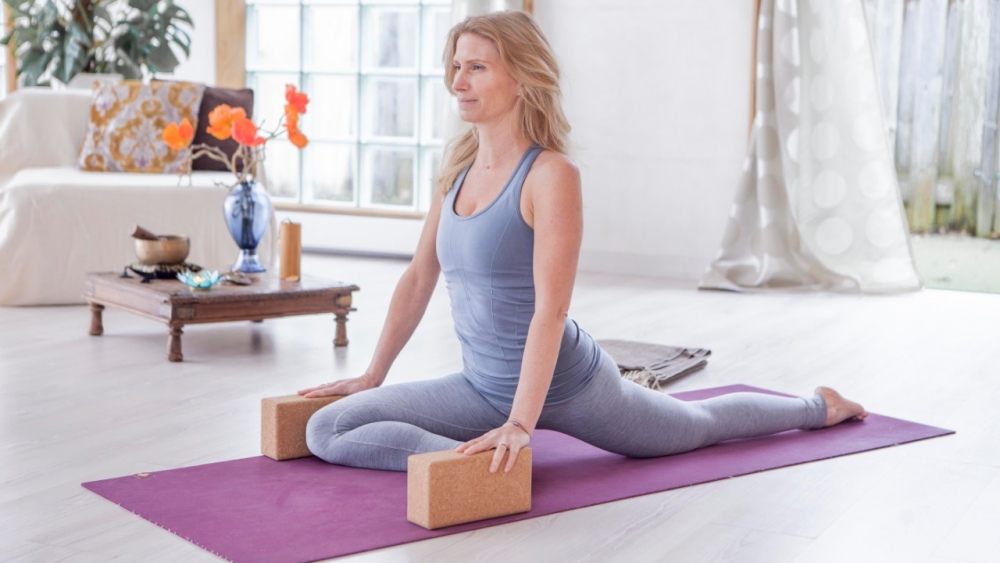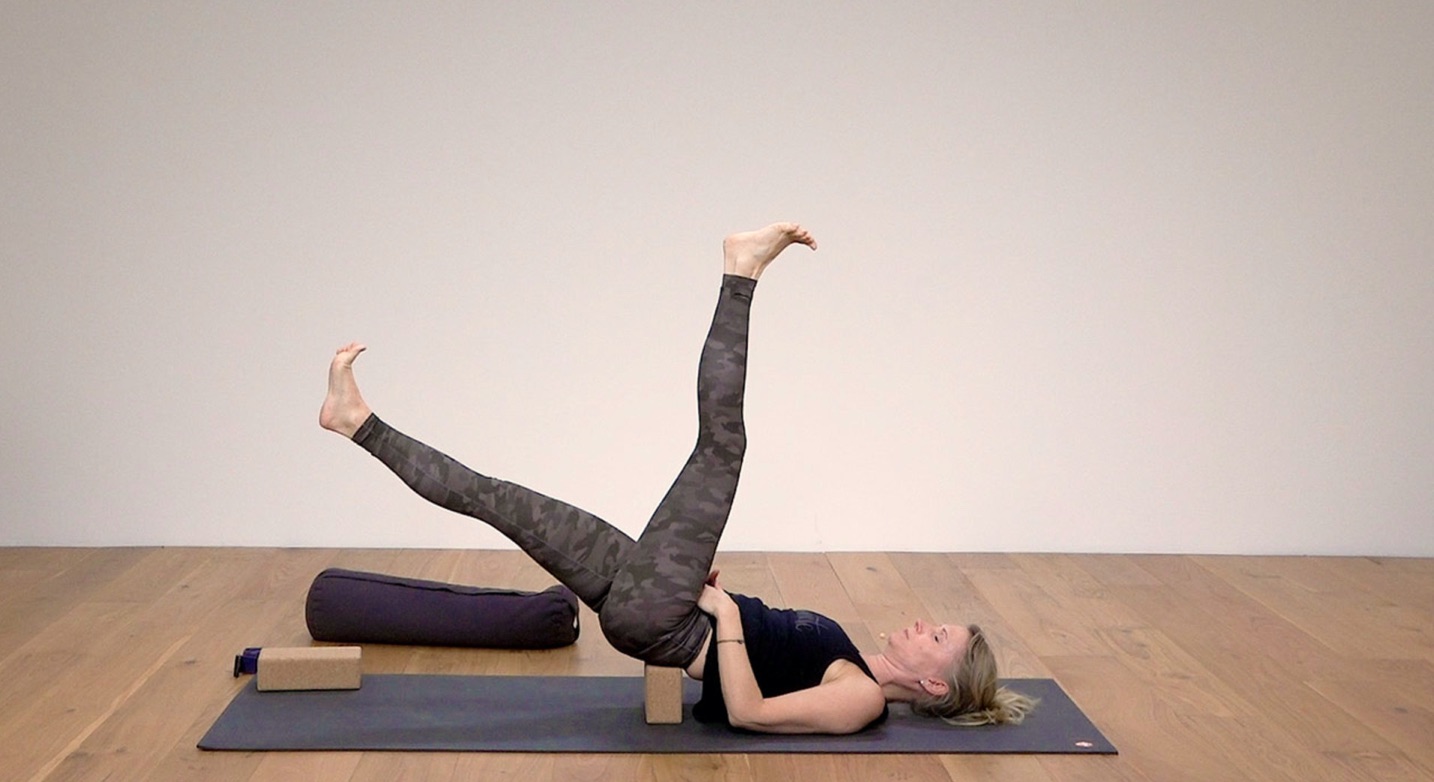Bandhas are energetic locks in the body. In a physical sense they are, as my fellow EkhartYoga teacher, Jennilee Toner, puts it: “the activation and engagement of muscle fibres in strategic areas of the body, that support the toning and lifting of the systems of the body against the natural laws of gravity”.
The main bandhas are:
- Mula bandha – Root lock, involving the pelvic floor muscles
- Uddiyana bandha – Upward flying lock around the lower belly
- Jalandhara bandha – Throat lock
- Maha bandha – The great lock, combining the previous three bandhas
- Pada bandha – Foot lock
- Hasta bandha – Hand lock
There’s already a great deal written about bandhas from an anatomical perspective and this is a useful place to start to get a sense of where they are in the body. I recommend reading Jennilee’s article if you’re not already familiar with them.
What’s the purpose of the bandhas?
While activating the bandhas may result in an experience of lightness in the body during asanas, their real purpose is to awaken consciousness within the central energy channel of the body – the Sushumna Nadi.
Over the past few years I’ve been working with the bandhas in a very different way – approaching them with an intention of softness and release, rather than by engaging the muscles. It’s had a profound effect on my yoga practice.
In this article I talk about accessing the bandhas experientially and suggest different asanas where you can explore the feeling of them in your own body. I’ve suggested a class for you to try this in below.
Gripping vs. releasing
Previously when I used bandhas in my asana practice I experienced a gripping heaviness and a certain amount of tension in the poses. The language we use around the bandhas like “activate”, “engage”, “lift” – implies some force. This never felt quite right to me.
Our yoga practice is a collection of techniques for observing what arises in the present moment, without holding on to (gripping) or rejecting it. It’s a direct experience of awareness. We gain entry to this experience by inviting softness – never by force. I began to explore the bandhas from the same place: softness and release.
Our yoga practice is a collection of techniques for observing what arises in the present moment, without gripping or rejecting it… We gain entry to this experience by inviting softness – never by force…why not access the bandhas from the same place?
It’s a subtle action, more of an energetic release, letting go of any tension that is held around the edges of the area you want to feel the lift. So for example, in Mula Bandha, any tension or ‘holding’ in the outer edges of the pelvic floor are consciously released, resulting in an energetic lift in the centre of the pelvic floor. It feels like a conscious and soft letting go to the earth without any pressing or pushing down.
Accessing the bandhas through softness
Mula bandha (root lock): A release of the circumference of the pelvic floor so that the centre of the pelvic floor, around the perineum, can lift effortlessly. You feel a light, upward energy through the central energy channel.
Uddiyana bandha (upward flying lock): A release of the outer circumference of the belly to feel a soft, subtle lift of energy from the centre upward through the body. This upward movement of energy is supported by a gentle muscular contraction in the abdominal area that happens naturally from the release, not from force. This bandha co-exists with Mula bandha.
Jalandhara bandha (throat lock): Through the release in Mula bandha and Uddiyana bandha the upward energy is allowed to flow up to the heart. The body might spontaneously want to hold (lock) prana in the heart; Jalandhara bandha then happens effortlessly. The chest rises to the chin, the soft part at the base of the throat moves up and back, and the chin comes down towards the chest locking prana in the heart centre. All these movements are very subtle.
Pada bandha (foot lock): A release of the weight down through the edges of the soles of the feet. This results in a feeling of energy lightly drawn upwards through the centre of the soles up through the legs and central channel.
Hasta bandha (hand lock): A release through the circumference of the palms of the hand. This results in a feeling of a subtle lift of energy up through the centre of the palms, arms and in the central channel.
Maha bandha (the great lock): Activation of the three main bandhas – Mula, Uddiyana and Jalandhara – together.
What’s changed?
Experiencing the different bandhas by releasing the most gross and dense corresponding body part allows the lightness of the subtle energy (prana) to rise up and be experienced within the central energy channel (Sushumna nadi).
Working this way with the bandhas has transformed my practice. I now experience a stability, lightness and opening, all at the same time. I also (finally) understand the experience of ‘floating’ forward from Downward Facing Dog to Uttanasana (Standing Forward Fold). However, I enjoy this experience of the bandhas most while doing the simplest of poses.
Feeling the effect of the bandhas is also a great tool to keep yourself from pushing too much in yoga poses. When you clearly feel that energy, stay connected to the feeling. If you overstretch, strengthen or push you lose contact with it – this is a helpful warning light that you are going too far.
The ‘feeling’ of the bandhas when you access them from a place of release and softness is a very subtle practice and can only ever be a personal experience. My invitation to you is to allow space for the experience to be personal – and somewhat different. Try it for yourself with these explorations.
Explore the bandhas in these 8 yoga poses:
1. Tadasana (Mountain Pose)
Pada bandha in Tadasana
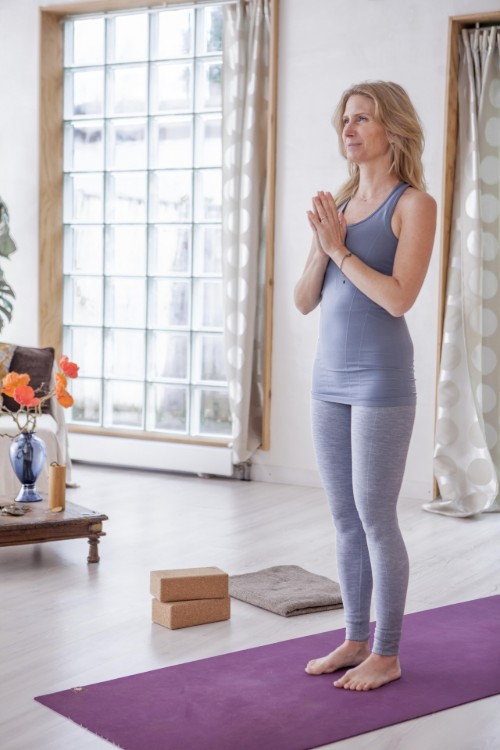
Spread and release the toes. Exhale, release the outer edges of the soles of the feet without collapsing your arches. Inhale, feel a gentle lift up from the centre of the soles of the feet. This is your Pada bandha.
Mula bandha in Tadasana
Exhale and release the circumference of the pelvic floor. Inhale and feel a gentle but clear lift from the centre of the pelvic floor up through the central energy channel. This lift is gentle and effortless, initiated from a release downwards, not a pulling upwards. This effortless lift can easily be held throughout both the inhalations and exhalations.
2. Ardha Uttanasana (Half Forward Fold)
Mula bandha in Ardha Uttanasana
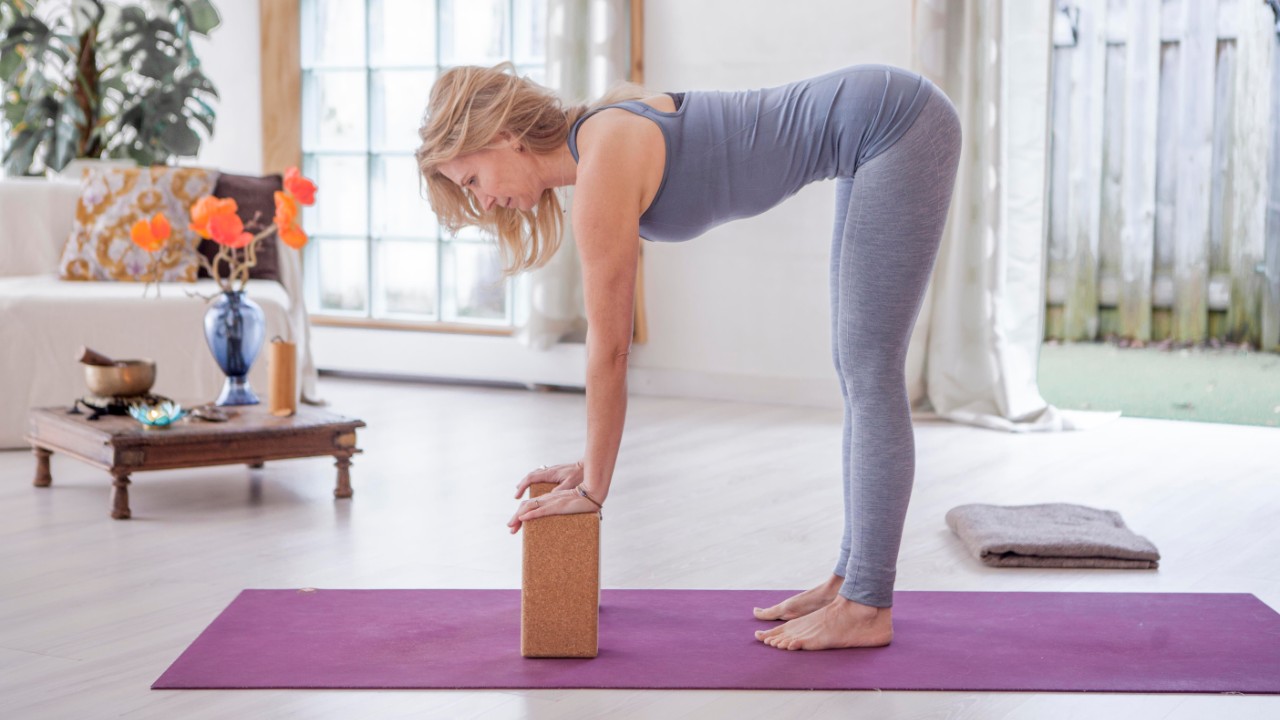
Exhale, release the circumference of the pelvic floor and feel, as you inhale, the lift from the centre of the pelvic floor up through the central channel. If you allow the flow of energy to move all the way up through the spine, Uddiyana bandha – the effortless drawing in and up of the belly underneath the ribcage – happens naturally as well. Here you begin to feel how Mula bandha and Uddiyana bandha co-exist.
3. All fours and Cat / Cow
Hasta bandha in All fours and in Cat Cow
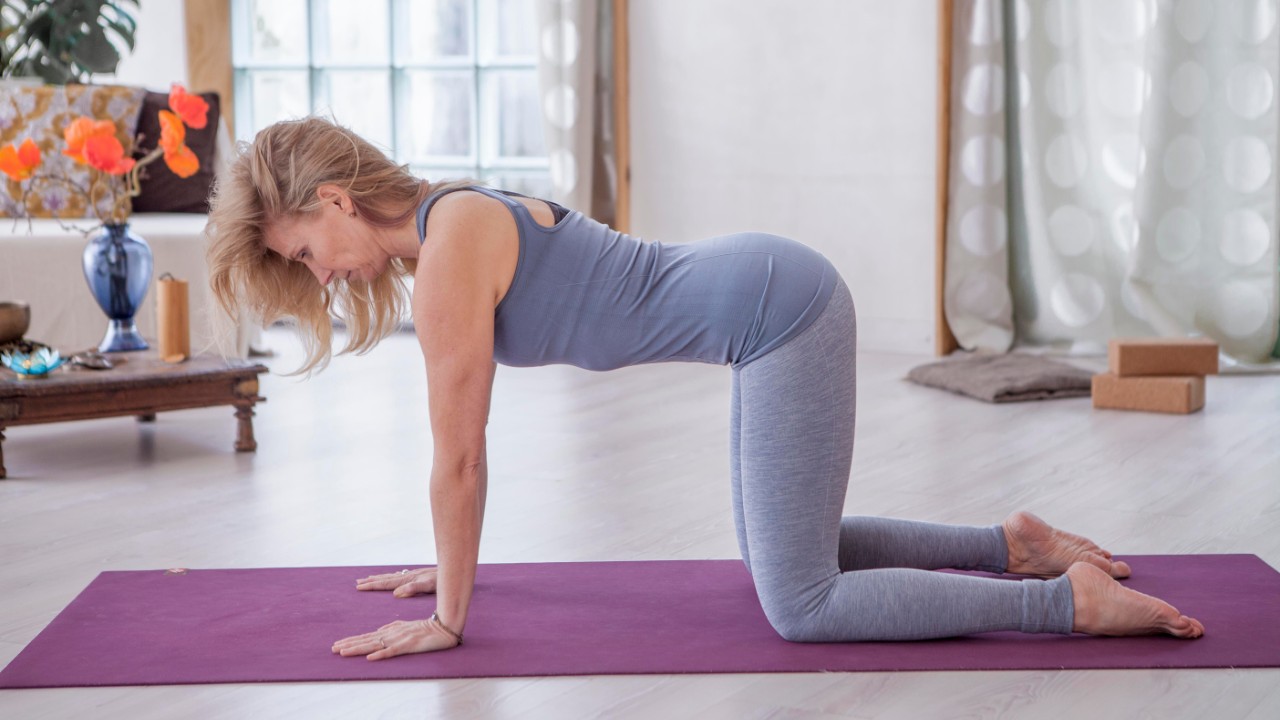
Exhale, release the circumference of the palms of the hands down into the floor. Inhale and feel a gentle lightness and lift come up through the palms of the hands. This light, upward energy can also be felt in the central channel.
Keep connecting with the feeling of energy being drawn up through the arms and through the central channel, and explore your transitions between Cat and Cow pose in the joints of the hands, arms and spinal column.
4. Adho Mukha Svanasana (Downward Dog pose)
Keep the knees a little bent and focus on keeping length in the spine.
Mula bandha and Uddiyana bandha in Downward Dog
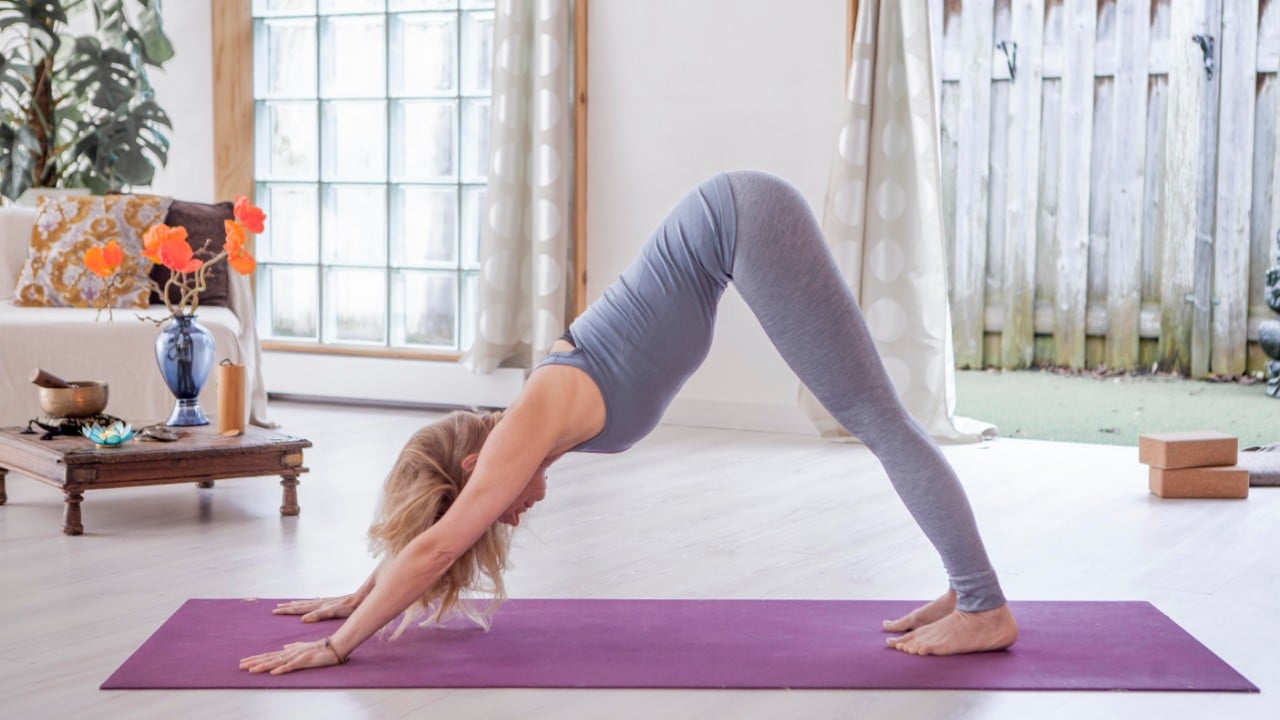
For Mula bandha, again release the circumference of the pelvic floor. Uddiyana Bandha basically happens all by itself when the abdominal muscles are relaxed. You feel a gravitational pull towards the ribcage of the abdominal cavity (a hollowing) and its contents. This all happens from releasing, no effort involved.
In Downward Dog you can use the lightness of Hasta bandha, Mula bandha and Uddiyana bandha to propel the body forward to Ardha Uttanasana through a light hop forward.
5. High lunge / Crescent variation
Pada bandha, Mula bandha and Uddiyana bandha in Crescent pose
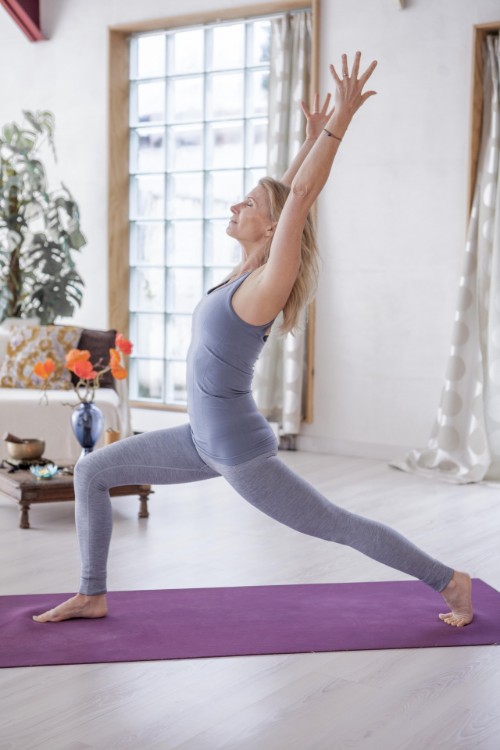
Exhale as you release the outer edges of the sole of the right foot. As you inhale, feel the light upward flow of energy through the centre of the sole. First of all, feel how this takes the unnecessary strain out of the joints. The earth holds the weight and the joints keep you stable.
Next, feel how intuitively Mula Bhanda also occurs through a release in the pelvic floor. When you want to support the energy that flows up through the spine to move further up, release the outer circumference of the belly to feel a soft subtle lift of energy from the centre upward through the body. This upward movement of energy is supported by a gentle muscular contraction in the abdominal area that happens naturally from the release.
From here, transition back to Downward Facing Dog and repeat on the other side stepping the left foot forward into your Crescent lunge.
6. Eka Pada Rajakapotasana (Pigeon pose) variation
Prop yourself up by using blocks under the hands so you can be upright as much as possible without ‘hanging out’ in the hip joints.
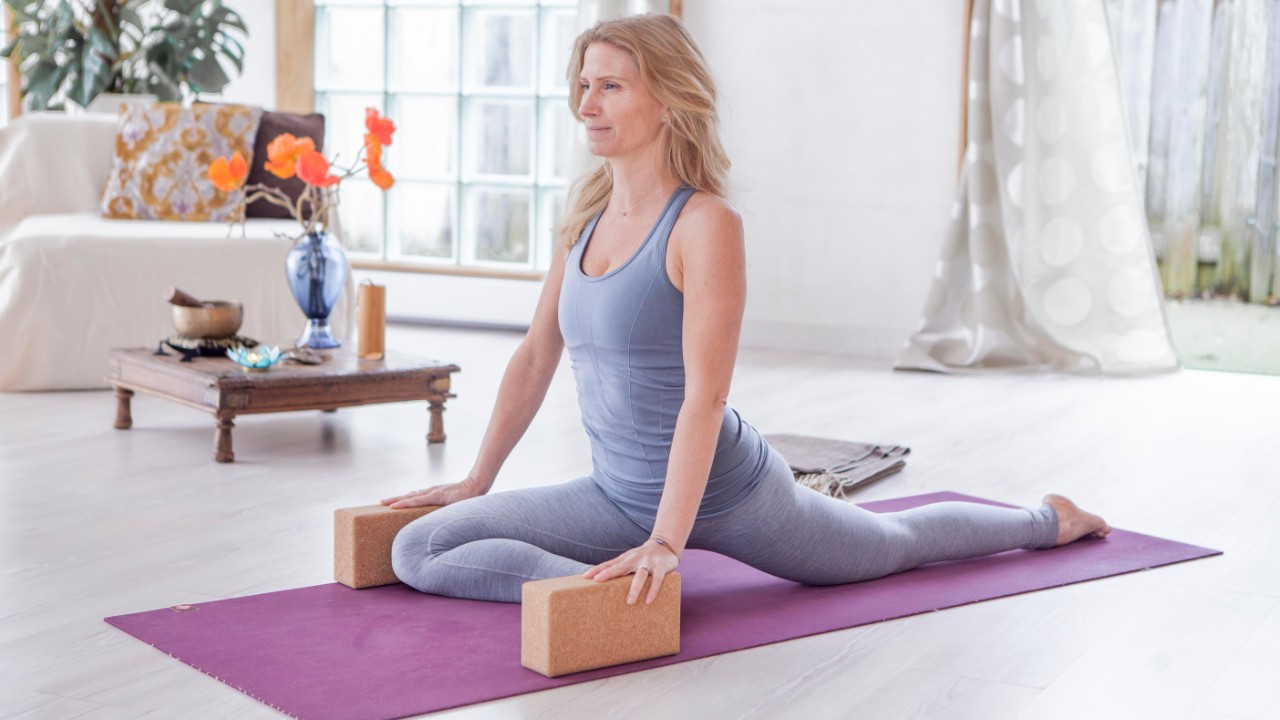
Mula bandha and Uddiyana bandha in Pigeon pose
Move around with your hips and spine until you can feel a connection between the centre of the pelvic floor and the central channel. Exhale and release the outer edges of the pelvic floor. As you inhale, feel how that clear, light energy flows up through the centre of the pelvic floor into and through the central channel.
Next, support that energy through a soft release of the outer circumference of the belly and allow it to be drawn further up the spine. This means that the musculature of the abdominal wall engages, but you are just allowing, not forcing, that to happen. Feel how this brings lightness, stability and strength to the hips, spinal column and ribcage.
Repeat on the other side.
7. Paschimottanasana (Seated Forward Bend)
Sit on the floor with your legs straight in front of you and your buttocks on a folded blanket. Lift your spine out of your hips, straighten your back and move around until you feel a connection between the centre of the pelvic floor and the central channel.
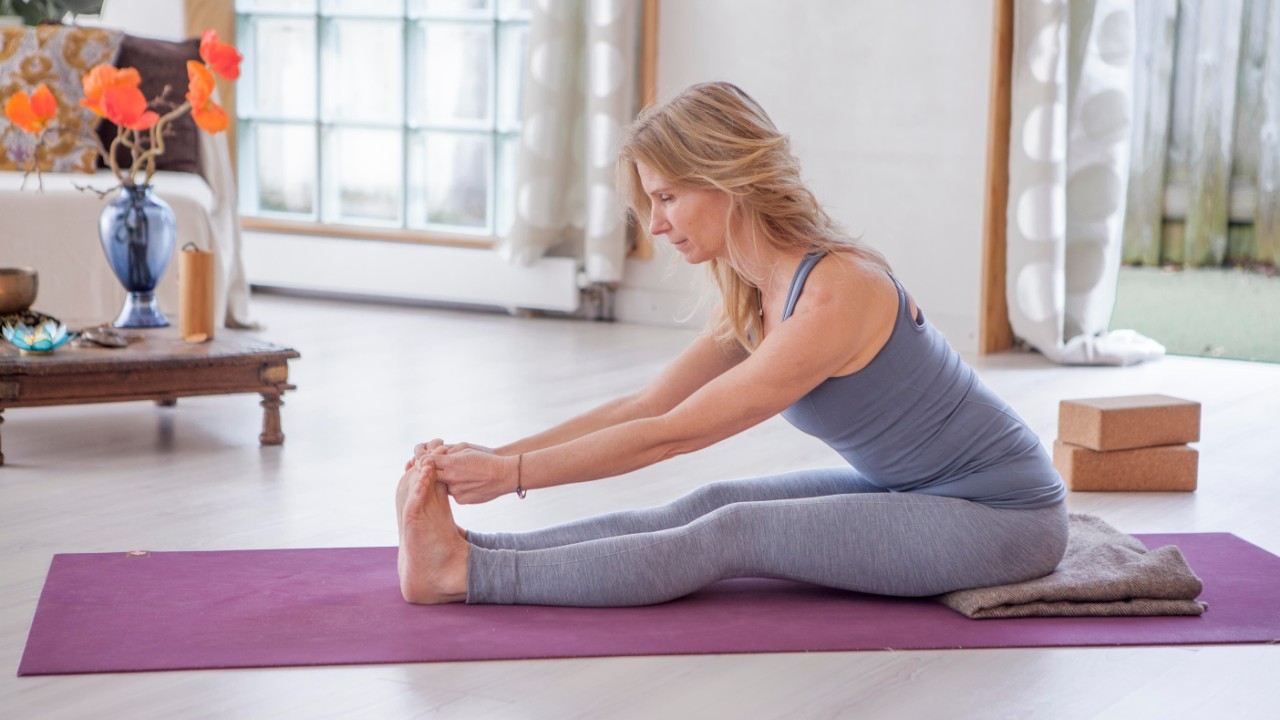
Mula bandha and Uddiyana bandha in Paschimottanasana
Exhale, releasing the outer edge of the pelvic floor, then inhale to feel energy flow up through the centre of the pelvic floor, into and through the lower part of the central channel. To encourage this energy to flow effortlessly up further through the central channel, soften the circumference around the whole belly. Automatically, the deeper abdominal muscles engage to keep you sitting upright and to move that energy up.
8. Sukhasana (Easy Cross Legged Pose)
Sukhasana with Maha bandha (the great lock)
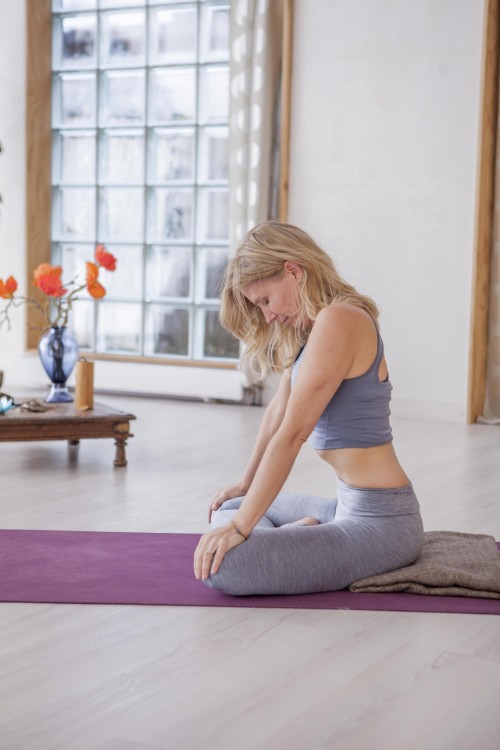
The great lock combines all three main bandhas: Mula bandha, Uddiyana bandha and Jalandhara bandha. This lock is performed during a retention of the breath after the exhale.
Maha bandha in Sukhasana
Gently exhale and release the circumference of the pelvic floor. Inhale deeply, allowing the energy to move up through the pelvic floor in the central channel (Mula bandha). As you exhale, hold the knees with palms facing down and fold forwards, expelling the air through the mouth with the tongue sticking out.
Without taking an inhalation, bring your torso back upright, pressing into the knees with the hands. While you are still holding the outward retention of the breath, release the circumference of the pelvic floor again. With a ‘mock’ inhalation (still staying empty), feel energy being drawn up through the pelvic floor, hollowing the stomach under the ribs (Uddiyana bandha).
Feel the chest rising to the chin, the soft part of the throat moving up and back and the chin coming down towards the chest (Jalandhara bandha). Feel prana in the heart space. When you feel you need to breathe in again, first release Jalandhara bandha. Then inhale and release Mula bandha.
Keep practising!
To experience the bandhas from a place of release and softness, it’s helpful to practice them in the above poses and others in this way regularly. It’s a subtle practice and will likely take a lot of concentration and a finely-tuned awareness. It is well worth it though and has the capacity to positively transform your yoga practice.
I hope you enjoy the exploration!
Love
Esther x
Explore your bandhas in class with Esther
Remember why you practice yoga: Steadiness and kindness are the two main qualities we work with in this class. We access steadiness through learning to work specifically with the bandhas (energy valves) in the asanas. Enjoy the journey!

